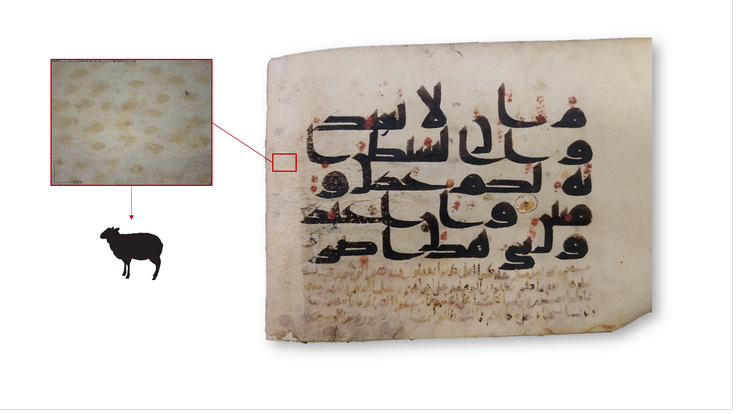The Use of Parchment in Arabic Manuscripts of the Early Islamic Centuries
2023–2025
RFK07

Parchment was employed as writing support, alongside papyrus, at a crucial moment in the development of the Muslim written tradition. Some of the earliest known surviving examples of the Qur’an were written on parchment, but the support was also used to produce private documents and paraliterary texts. [1]
Sources on the production of Arabic parchment provide very limited information:: ‘Parchment will be made from fawn and gazelle till the end of July’, according to the Kitāb al-Anwāʾ (Cordova calendar) written by ʿArīb ibn Saʿīd al-Qurṭūbī (d. 976/365); an account with the prescription to avoid the use of emaciated sheep is reported in the Ḥisbah treaty of Ibn ‘Abdūn (d. 1135/529);[2] moreover, according to the al-Fihrist by Ibn al-Nadīm (d. ~1000/390), parchment was initially tanned with nawrah (a mixture of lime and arsenic), which was then replaced by the use of dates to make the support more flexible.[3][1] However, no complete description of the Islamic parchment manufacture seems to have survived.[4]
This project identifies markers associated with particular manufacturing techniques, differentiating manuscripts supposedly produced in different areas (Egypt, Maghreb, Persia, Al-Andalus), in different periods of time (7th–11th century), and in different contexts of use (official or personal religious use, legal purposes, paraliterary use).
In addition, we address the following questions:
- What are the main characteristics of parchment production in the Islamic world compared to other manuscript traditions?
- From which animals and species was parchment commonly obtained?
- Which inks were used in the first production phases of the manuscripts and which in the later additions?
- What kind of traces and degradation processes can shed light on how they were used and preserved?
In 2024, over 50 manuscripts written in Arabic script from various regions of the Middle East and North Africa were analysed using non-destructive and non-invasive techniques.[5][6][7] Our Artefact Lab’s mobile equipment was employed during the analytical campaigns in various European collections, including the Oriental Manuscripts Collection at Leiden University Library, the papyrus collection (Erzherzog Rainer) of the Austrian National Library, and the Islamic Collection of the Chester Beatty Library. Furthermore, fragments from the Institute Arabic and Islamic Studies at WWU Münster and the Hamburg State and University Library were examined at the CSMC, and further campaigns in various collections are planned for 2025.
In addition to the material analyses, we employ a multidisciplinary approach involving philology, codicology, and chemometrics to compare the datasets, thus facilitating a deeper understanding of parchment production and use in the Arabic context. Moreover, examining production techniques and manufacturer choices may also be useful in understanding specific conservative issues, contributing to future research, as in the case of the ongoing Kairouan Manuscript Project.
People
Project lead: Claudia Colini
Research Associate: Giuseppe Marotta






